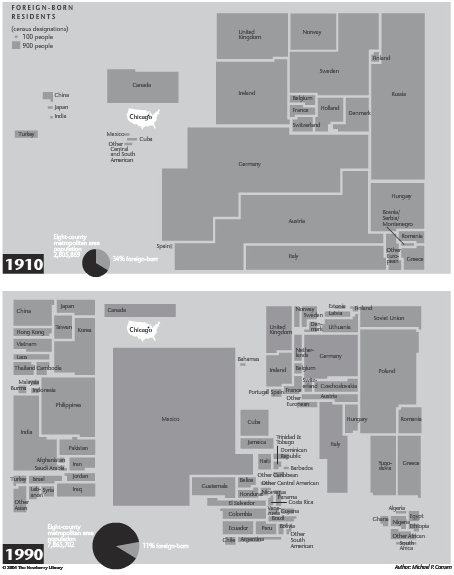This map shows the dramatic shifts in world migration patterns to metropolitan Chicago that have widened the region's diversity of foreign-born residents. In 1910 the area was already a multicultural region, with more than 900,000 residents born in foreign countries. They came overwhelmingly from Europe, with Germans the largest single group. The region was also home to almost 38,000 Canadian-born residents. Only a handful of Chicagoans came from Asia or Latin America. By 1990, metropolitan Chicago drew from around the globe. The region had more residents born in Latin America than Europe, almost as many from Asia, and thousands from Africa and the Caribbean. Mexicans now formed the largest single group. This cartogram is based on census data and reflects official nation-state designations. For example, Poland was not an independent country in 1910. Similarly, in 1990 the Soviet Union still existed, though some of its constituent parts (such as Lithuania) had already broken off. As a result, country data in some cases may not be comparable.

The Encyclopedia of Chicago © 2004 The Newberry Library. All Rights Reserved. Portions are copyrighted by other institutions and individuals. Additional information on copyright and permissions.